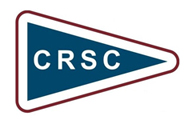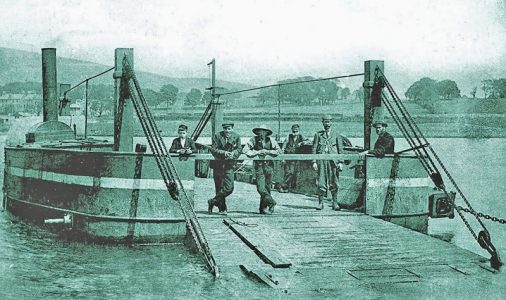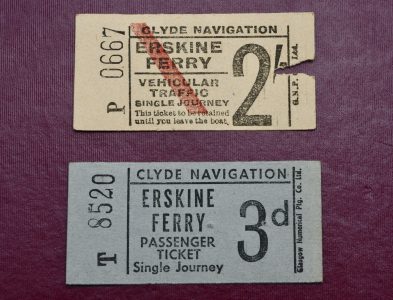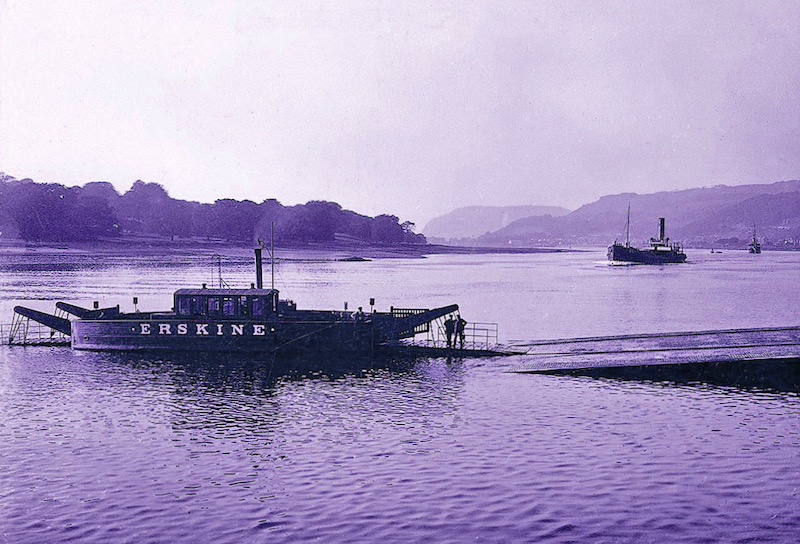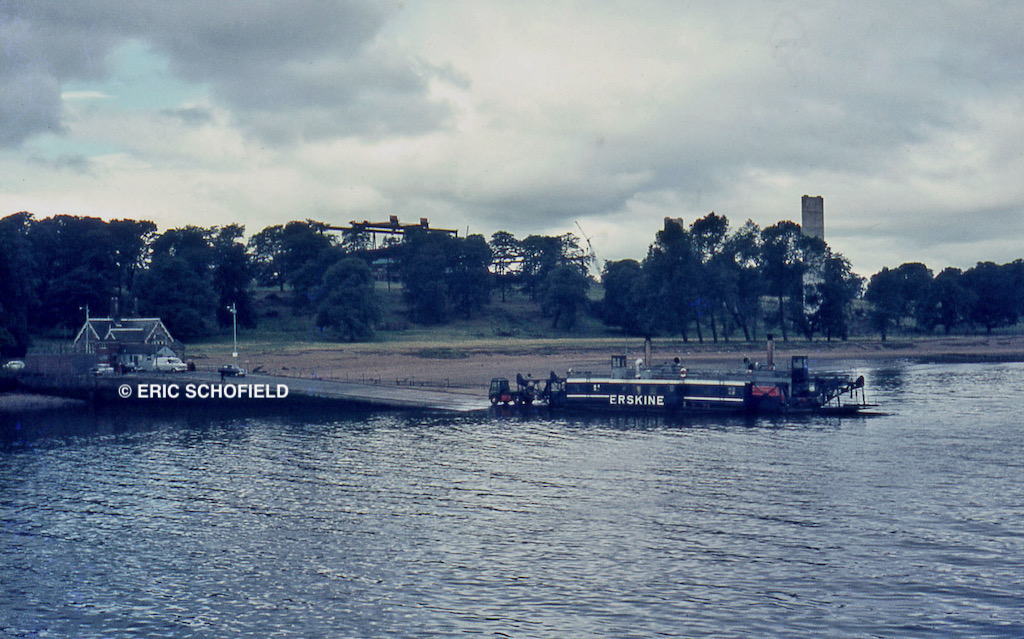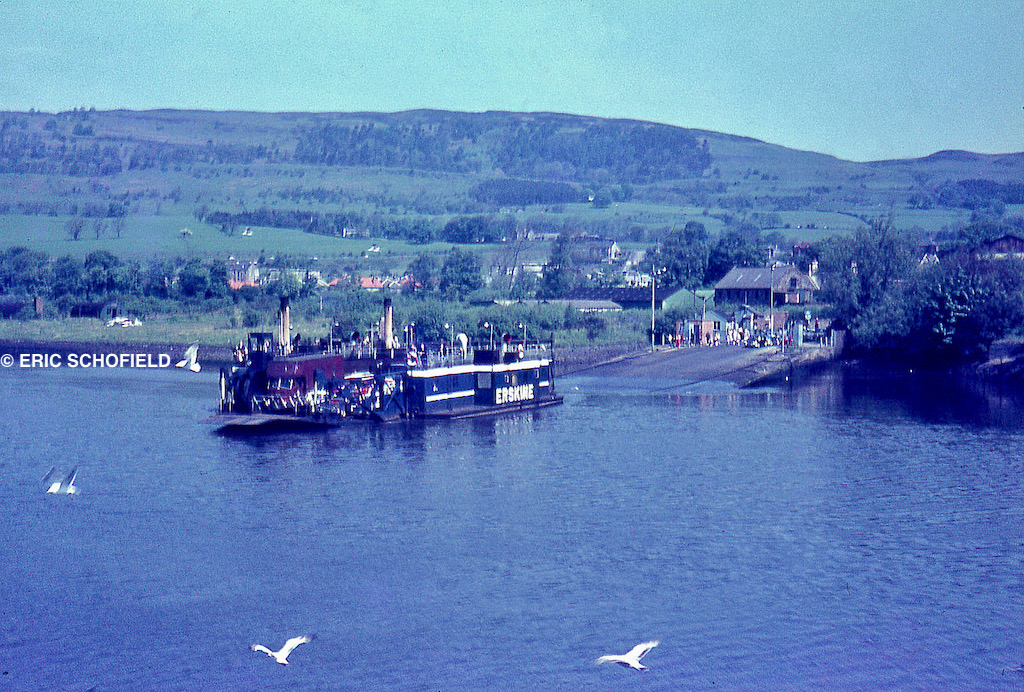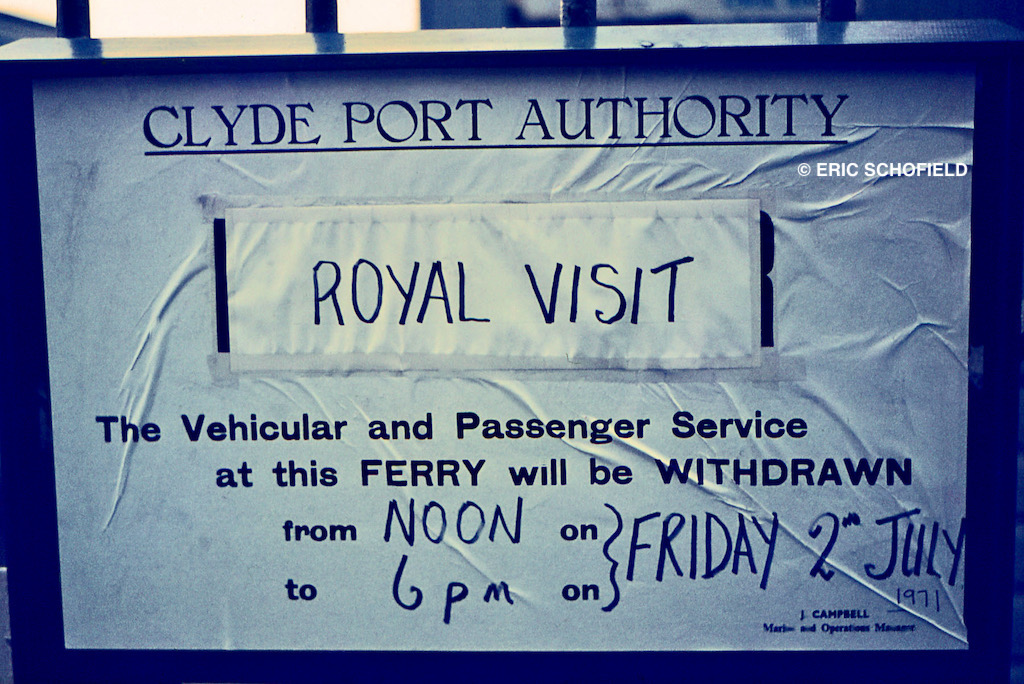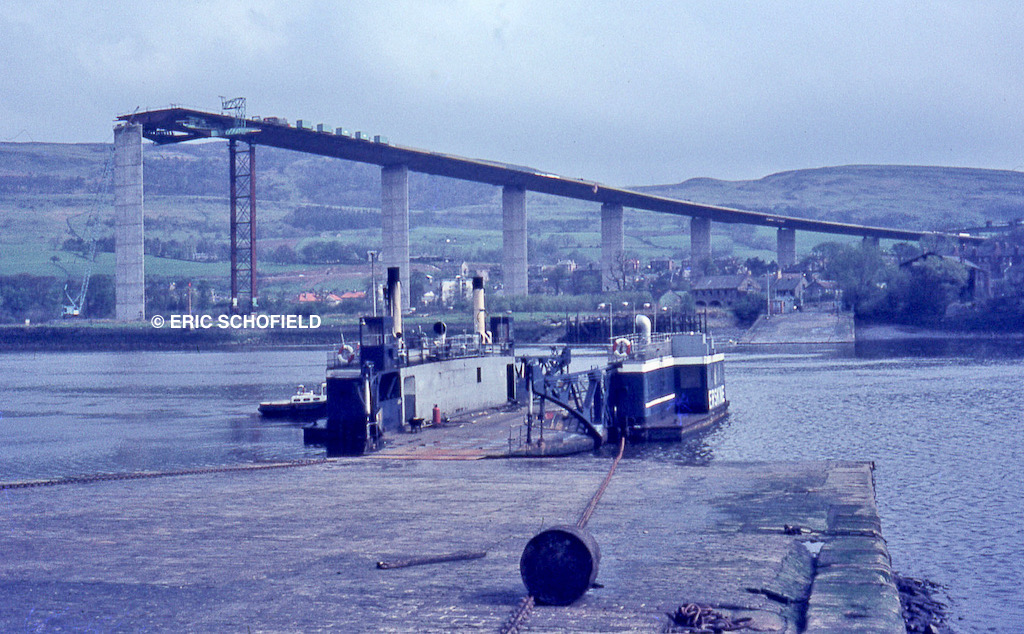
Old and new: this photo of the Erskine Ferry was taken on 10 May 1970, a day when the vessel was off service while undergoing repairs. The new Erskine Bridge, here under construction, opened a year later, revolutionising transport links between Dunbartonshire and Renfrewshire
Before the Erskine Bridge opened in 1971, the most convenient way to cross the lower part of the River Clyde was by chain ferry between the Renfrewshire and Dunbartonshire sides — a four-minute trip that, for more than a century, had been an integral but little noticed part of the shipping scene. In this fond memoir of the Erskine Ferry, illustrated mainly by his own superb photographs, Eric Schofield recalls the long vehicle queues that latterly built up on either side, as well the romanticised feelings the ferry aroused in many enthusiasts’ hearts as soon as its deathknell was sounded.
In the 1960s and 70s I amassed a bundle of tickets for journeys I had taken across the River Clyde on the Renfrew and Erskine ferries. It was not the practice of the Clyde Navigation Trust to date tickets or collect them as you disembarked, and as I did not deem it necessary to keep a record of such journeys, I cannot say definitively on which date(s) these vehicle and foot passenger tickets were issued. However, my photographic diary offers clues.
One date that does stand out in my memory is 2 July 1971 — the final day of ferry operation, following the inauguration of the Erskine Bridge. The importance attached to that event was underlined by the attendance of Princess Anne to perform the opening ceremony. Having cut the tape on the roadway on the north side of the river, the princess was driven to the mid-point of the bridge, where she unveiled a commemorative plaque, before continuing across to the south side.
The royal party then returned across the river by ferry, which had been withdrawn from public service for the purposes of the ceremony and no doubt given a quick wash and brush up before Princess Anne came aboard. Thereafter the ferry operated the usual service for the remainder of the day, mainly for the benefit of those who were wanting to make ‘one final journey’.
There had been a regular ferry at Erskine since 1777. Up to then, ad hoc crossings would have been made when high tides prevented fording or wading across the river — a practice fairly common before its widening and deepening.
Initially the ferry was an open boat run by Lord Blantyre of Erskine, the local landowner: it was probably punted across rather than rowed. In 1832 a hand-winched single chain ferry entered service, followed in 1857 by a steam powered double chain ferry, Urania.
In 1903 she was replaced by a new ferry named Erskine, which continued — from 1904 under the auspices of the recently formed Clyde Navigation Trust — until 1936, when an up-to-date Erskine took her place.
For the final nine years (1962-1971), the vessel operating at Erskine was the former spare ferry at Renfrew, which for its new purpose had been substantially rebuilt by Lamonts.
Any feeling of sadness at the demise of the Erskine Ferry in 1971 was, I think it true to say, reserved for those with a romanticised view of the ferry experience (such as enthusiasts). The wider travelling public were delighted that the extraordinarily long vehicle queues had come to an end: it was not uncommon for delays to last more than an hour.
In the early days of the bridge, vehicles were subject to a toll charge of 60p. Crossings became toll-free on 1 April 2006.
I have trawled through my slide collection and, together with a few online library pictures of older vessels, have put together this selection of photos covering the Erskine Ferry’s last few years of life.
The closure of the service 50 years ago did not bring an end to the career of the 1936-built ferry.
This vessel was moved upriver to Renfrew and used as standby vessel, the large ‘Erskine Ferry’ lettering along each side painted out and boards with the ‘Renfrew Ferry’ legend strung from the passenger deck railings.
Whilst laid-up she did for a time share space in the Pudeoch Basin with the withdrawn Vehicular Ferryboat No. 4, last of the vehicle-carrying ferries, which had been used at a number of Glasgow City river crossing points, latterly Finnieston. The old-timer was disposed of in the mid 1980s, around the time when vehicle crossings were withdrawn at Renfrew.
All images on the CRSC website are protected by copyright law. Do not reproduce them on Facebook, Pinterest or any other public platform.
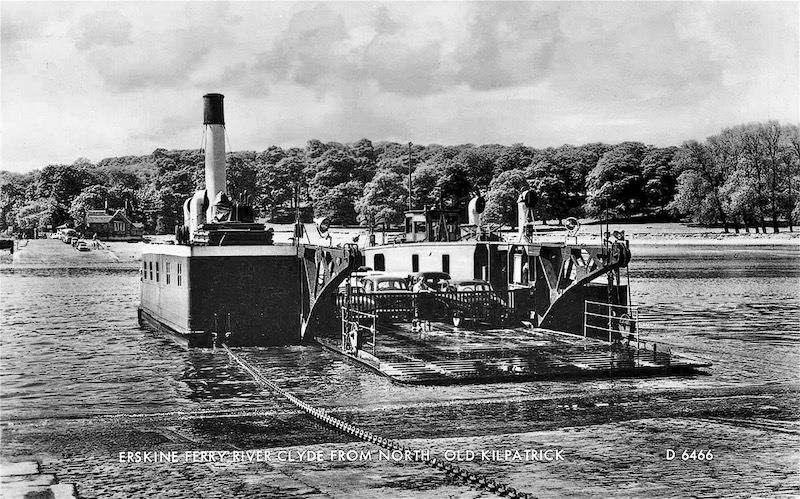
Erskine of 1936 ran until 1962. The chain guiding the vessel across the flow of the river can be seen in the foreground
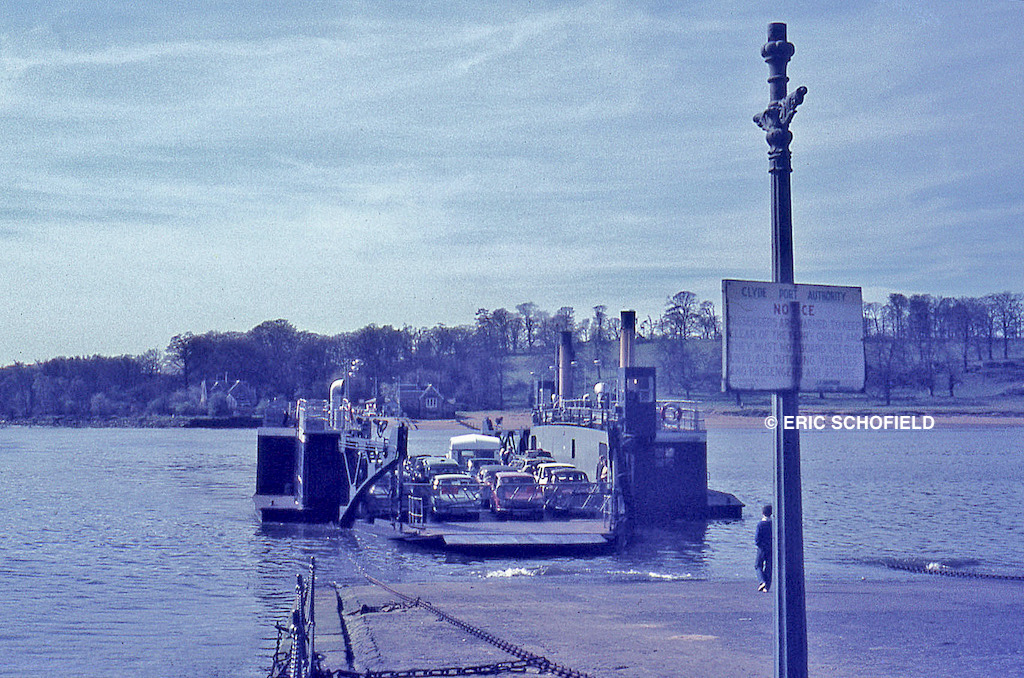
Arriving at the Old Kilpatrick Slipway on the Dunbartonshire side of the river on 11 April 1971: the sign says “Passengers are warned to keep clear of the ferry’s chains and they must not board the ferry until all outgoing vehicles and passengers are ashore”
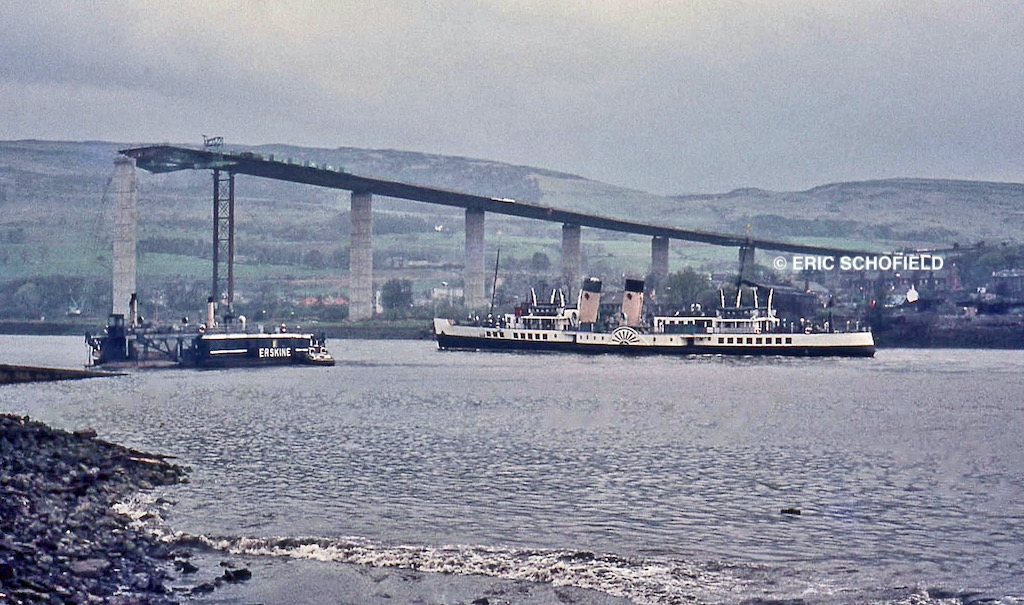
On 10 May 1970 construction of the new bridge is poised at midway point, as Waverley heads downriver
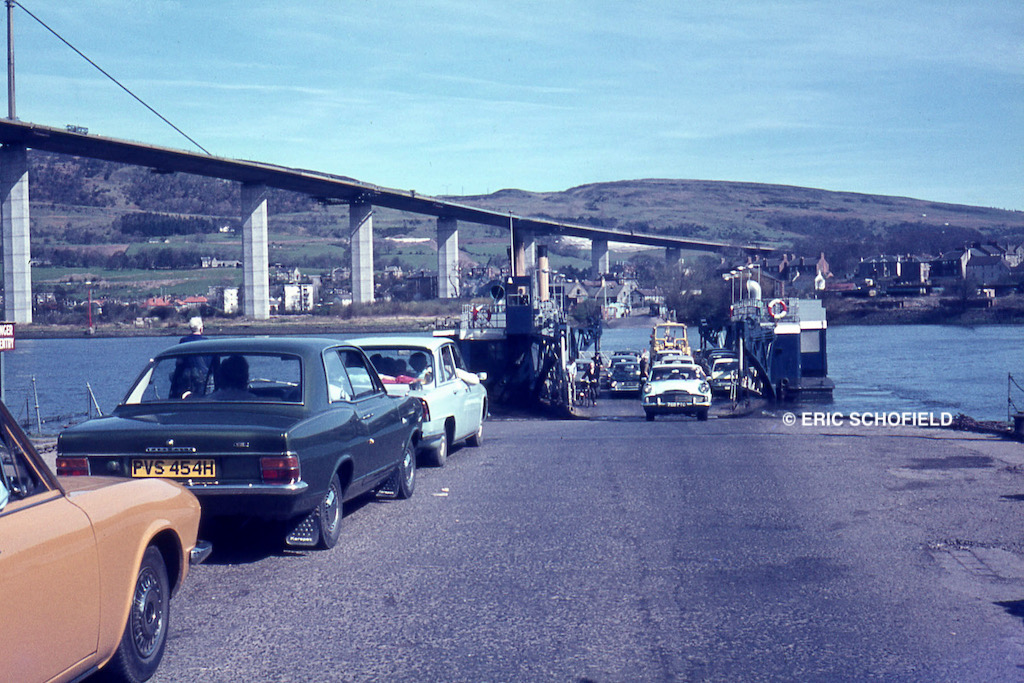
By the late 1960s long queues of cars would regularly form on either side of the crossing. Here, on 11 April 1971, the wait for those at the front is over
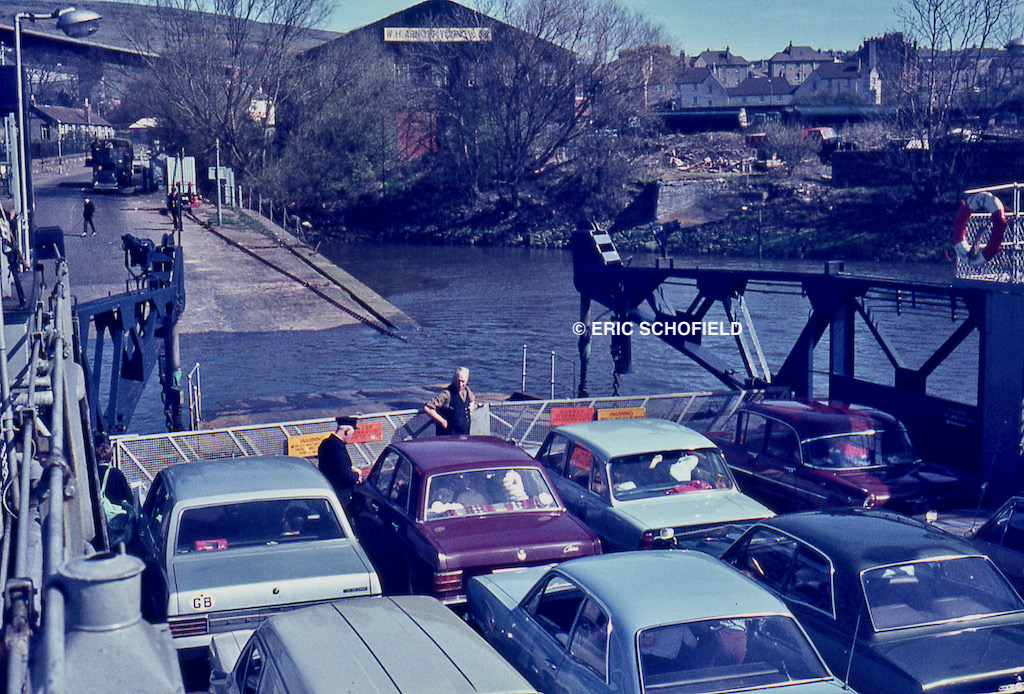
On a busy day such as 11 April 1971, there was barely enough time for the ferryman to sell tickets on the short crossing
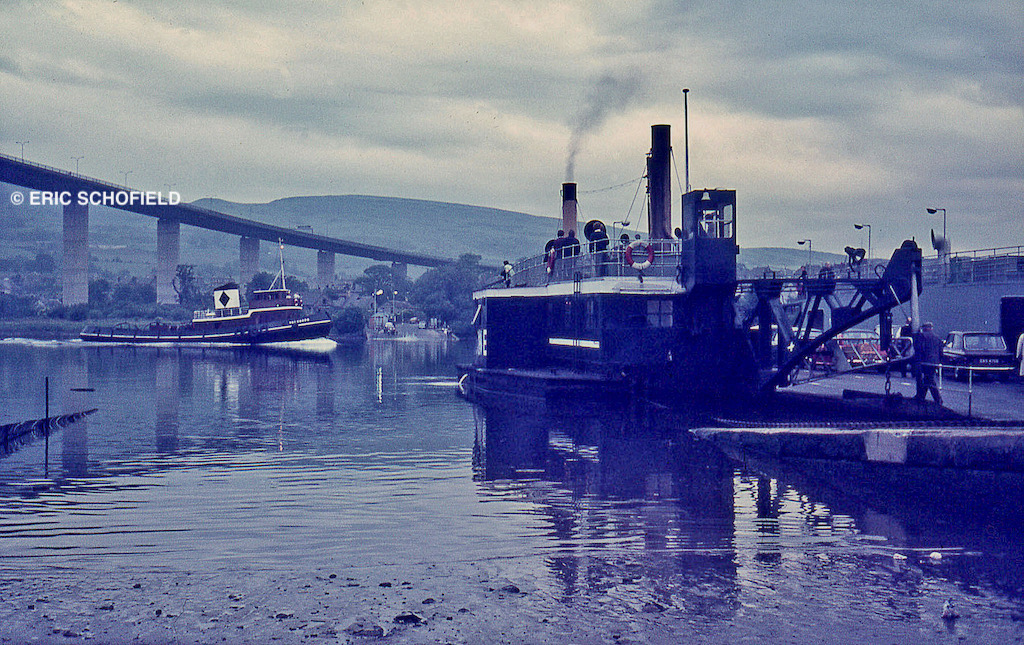
A poignant photo. Eric Schofield took it on the last day in service of the Erskine Ferry, as the tug Vanguard was passing on her way upriver
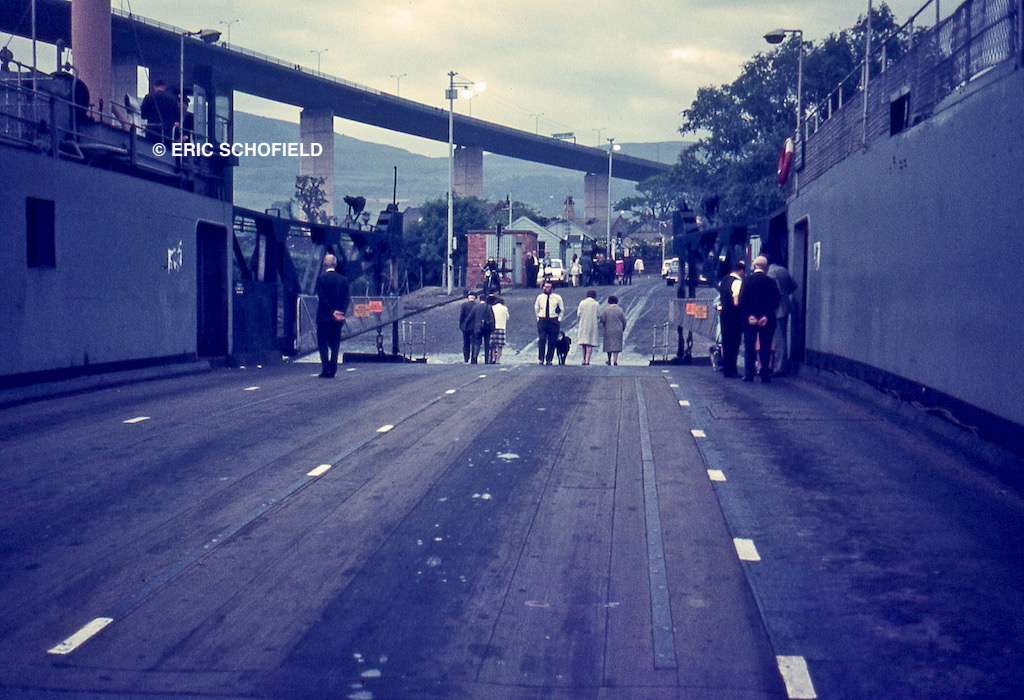
On the afternoon of 2 July 1971, with the bridge open and the royal party now gone, Clyde Port Authority officials and a handful of enthusiasts were left to enjoy the final crossings
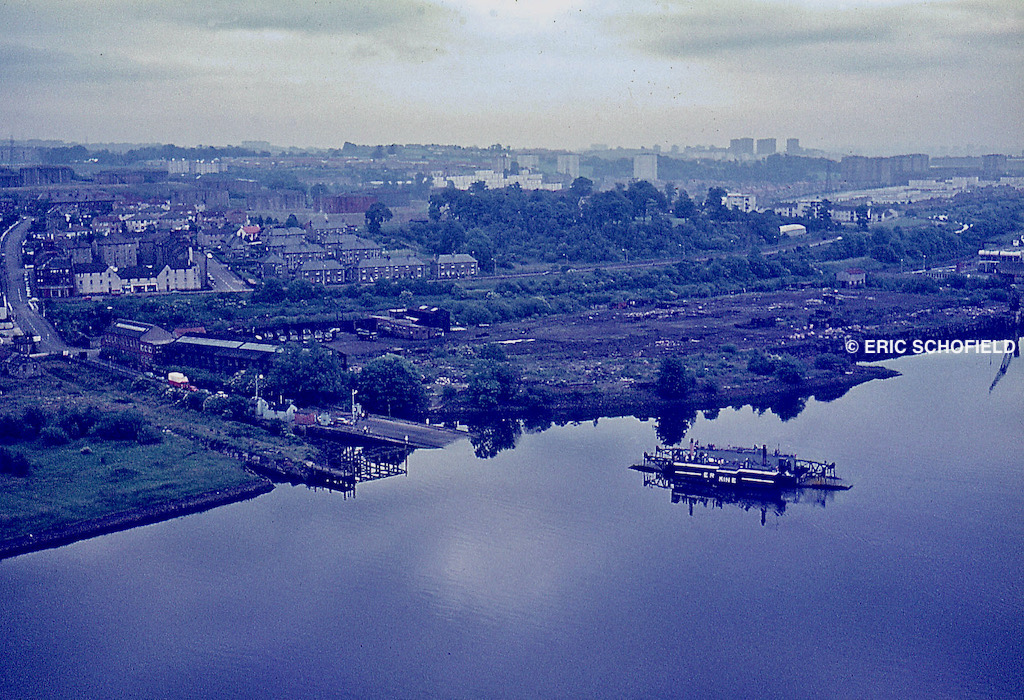
Among the final images of the Erskine Ferry in action, this one — taken by Eric from the newly inaugurated bridge on the late afternoon of 2 July 1971 — stands out as a memorial to a crossing that was long taken for granted
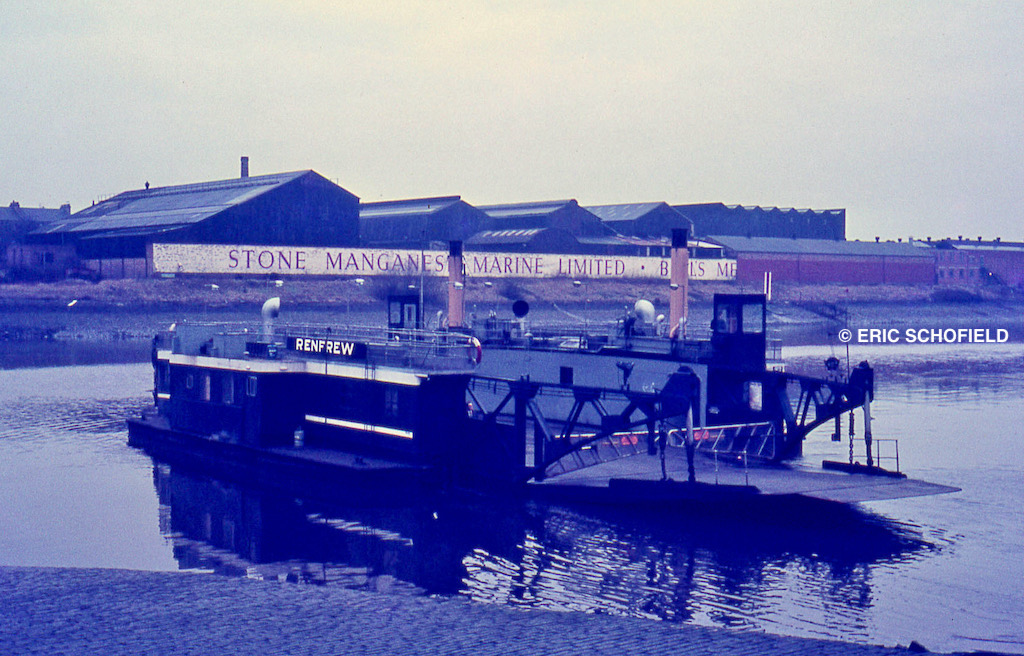
By February 1972 the displaced Erskine Ferry (on the crossing from 1962 to 1971) was operating as the standby Renfrew Ferry
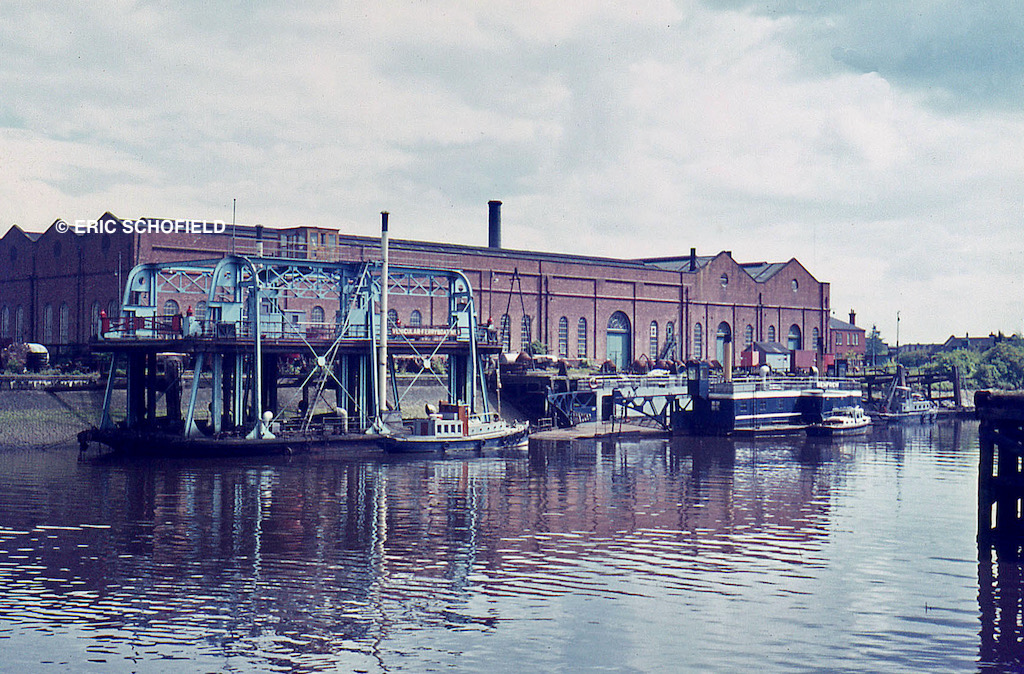
Eric took this photo at Renfrew on 6 June 1972: the former Erskine Ferry (right) is laid up next to Vehicular Ferryboat No. 4 — two classic remnants of mid 20th century river ferry design on the Clyde, about to pass into history
Published on 24 May 2021
